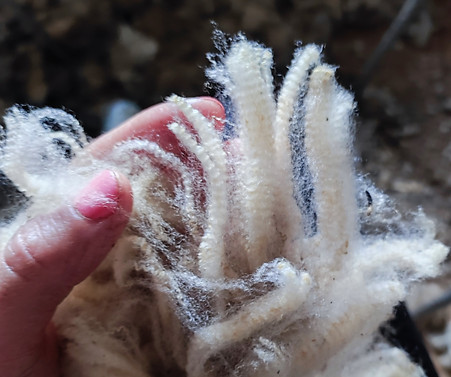


Wool selection
The raw material, wool, is at the heart of my work. The different selection and sorting steps are explained here.
Collection and sorting
The quality of wool varies not only from one breed of sheep to another, but also from one farm to another, depending on the way they are reared, the lambing period and the health of the animals. Wool is of much higher quality if it comes from a healthy flock (I'll tell you more about sheep farming in the Hautes-Pyrénées here). Quality wool means strong, long, wavy and fine fibres, and a beautiful colour. So wool selection is a vital first step.

Once a year, the wool is sheared by professionals. I then collect the wool from farms in the Val d'Azun. To make yarn, Only the best fibres having the qualities described above are selected. However, some parts of a fleece do not meet these criteria (they sometimes contain hair or jarre - to find out more about the composition of wool, see the dedicated article on my blog) and are not selected. Then comes the sorting stage, which I do entirely by hand. But what exactly does the sorting involve? A freshly shorn fleece will contain dust, plant debris such as hay, but also parts soiled by droppings. All this debris is removed by hand, a long and tedious but essential job!




Characteristics of selected wools
In the lourdaise ewe, the fibres are long, ensuring the strength of the yarn. The wool is also very pliable and, once washed, has a beautiful, luminous ecru colour. A small percentage of animals have a magnificent dark brown fleece, tending towards black. I sets these brown fleeces aside to use them in my handmade creations.
The ivory-white Tarasconnaise wool, which adds its finesse and plumpness, is combined with the wool of the lourdaise ewes in a unique blend.


.png)